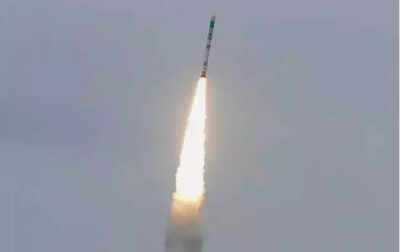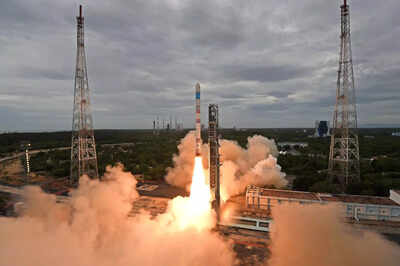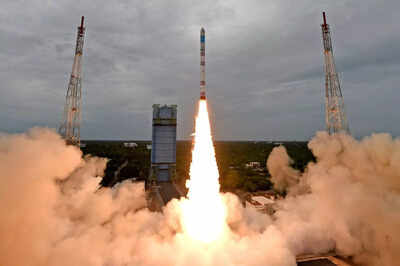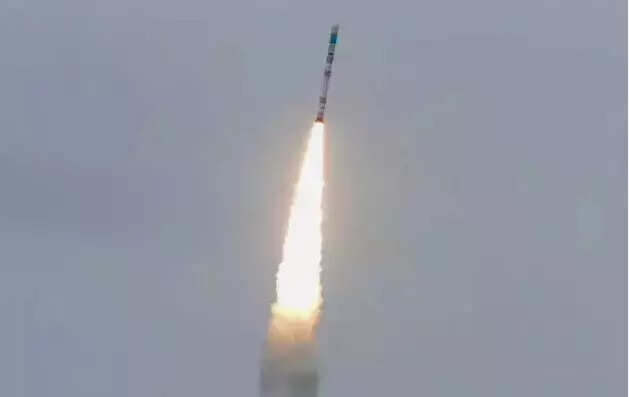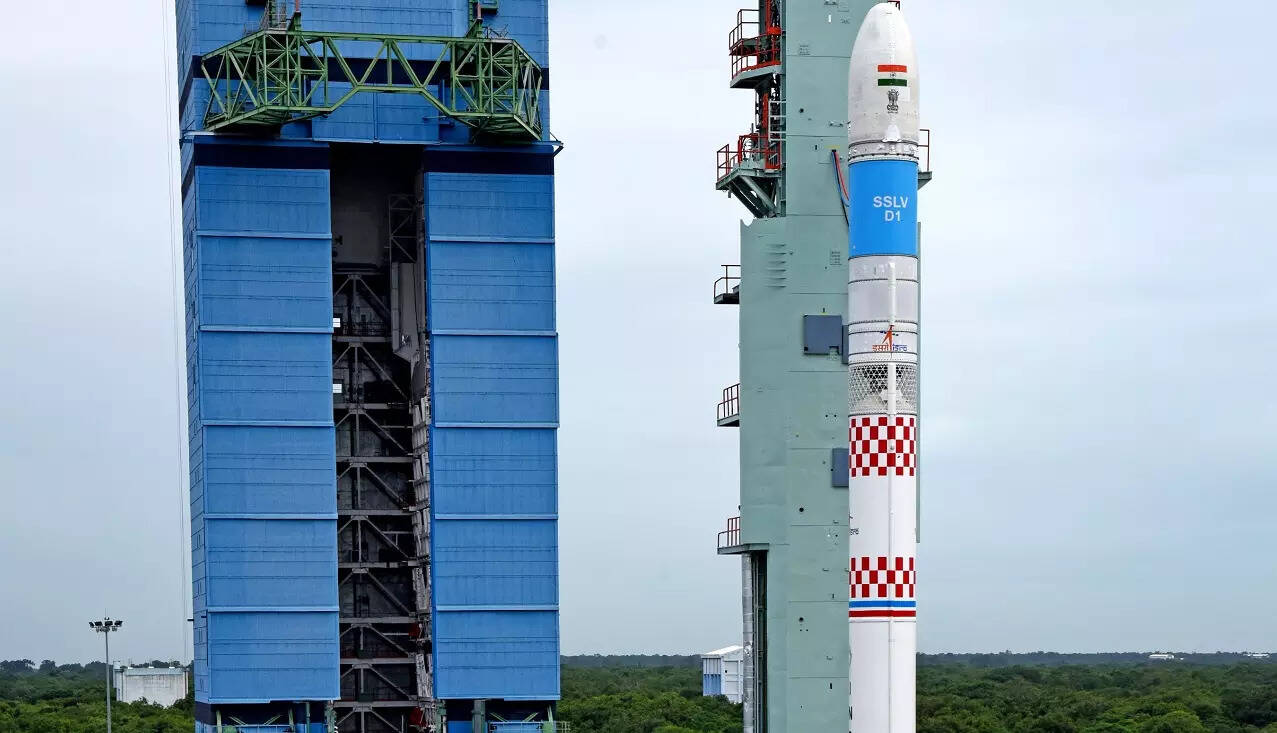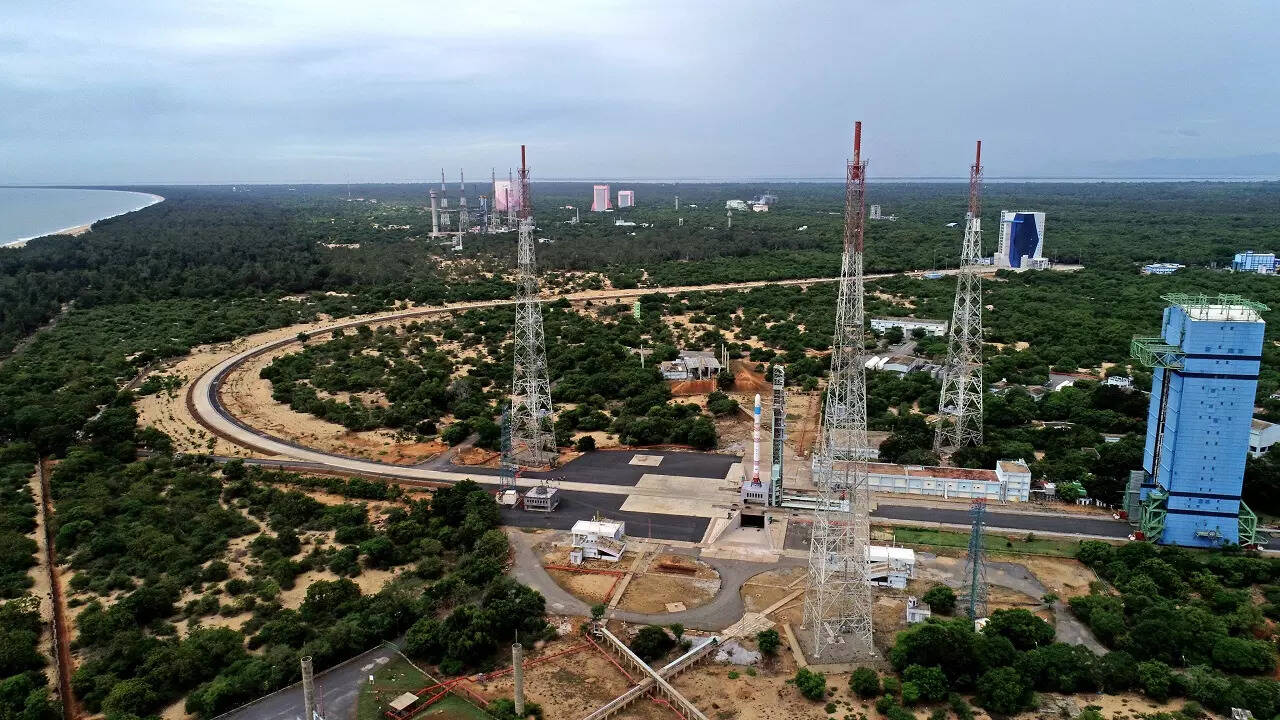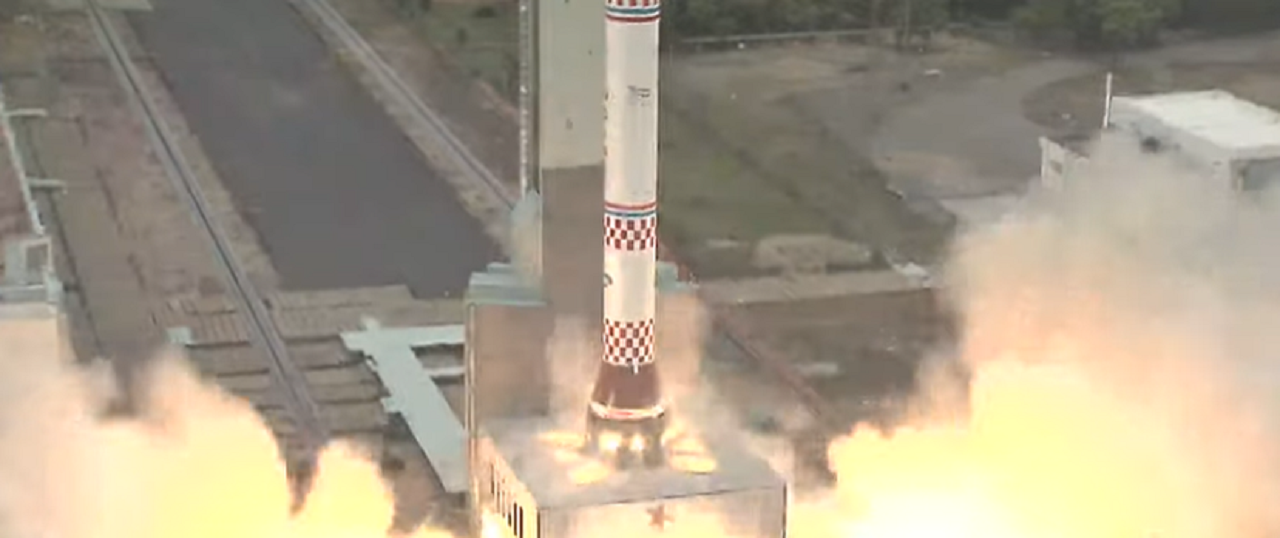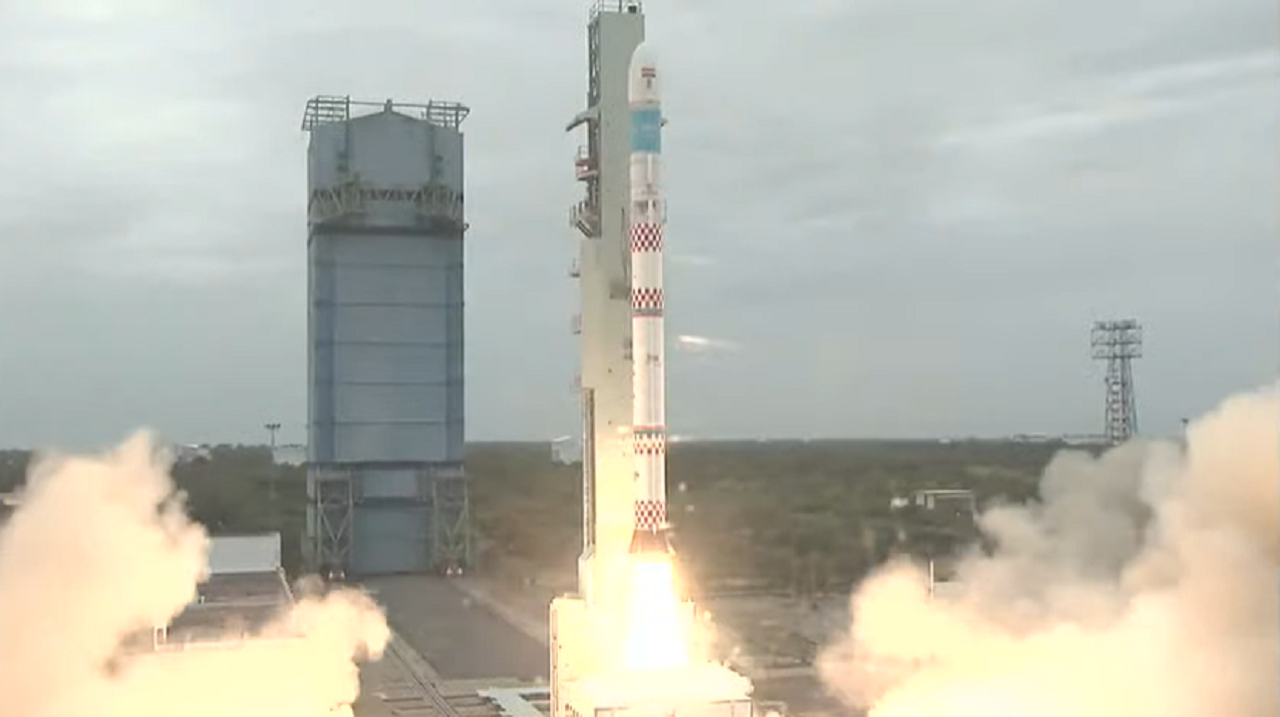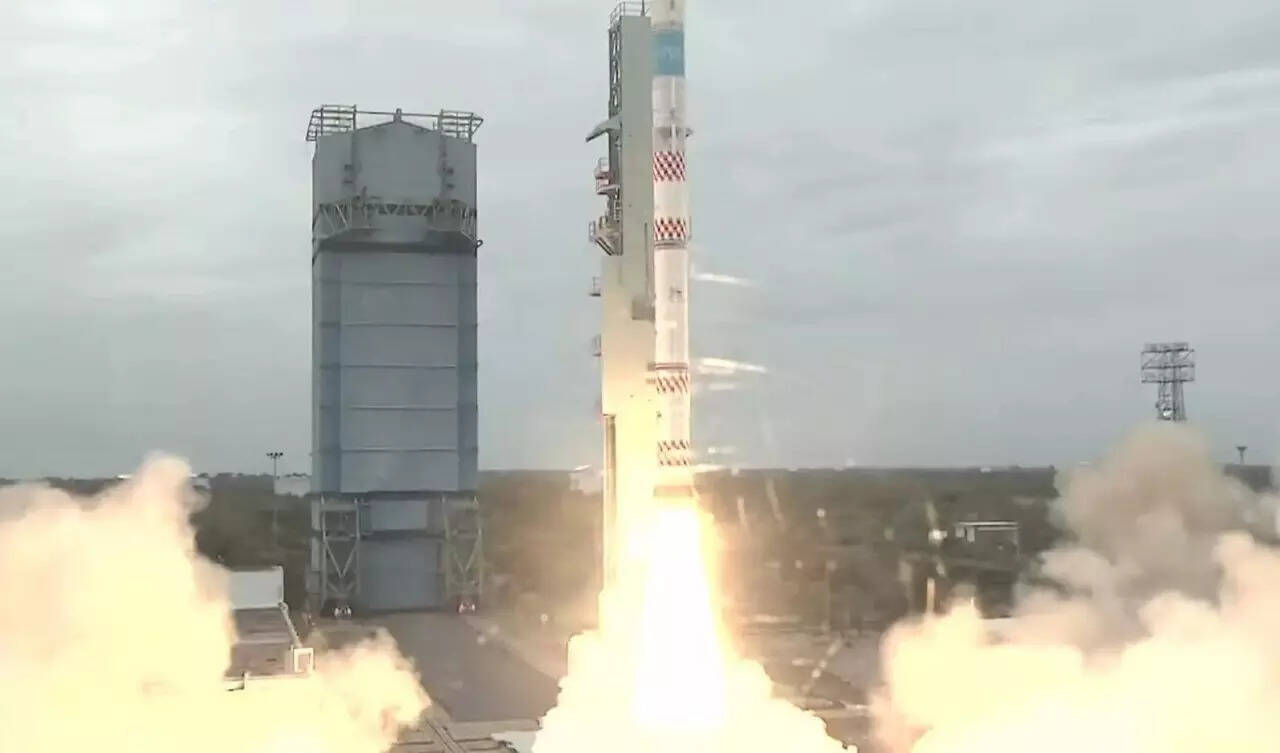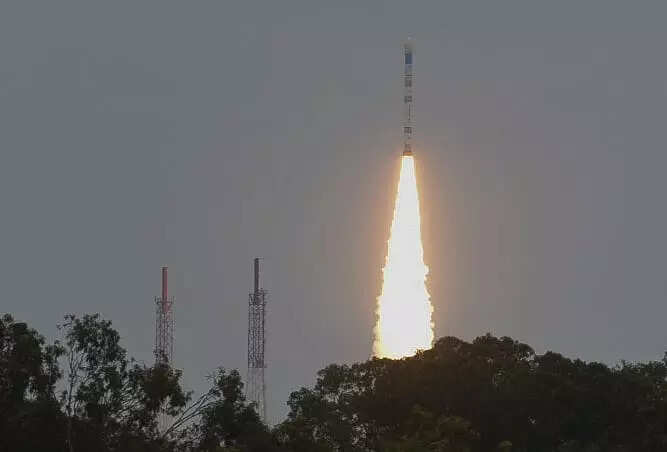Top Searches
- News
- India News
- SSLV-D1/EOS-02 mission: Isro says SSLV injects both satellites, orbit achieved was 'less than expected'
SSLV-D1/EOS-02 mission: Isro says SSLV injects both satellites, orbit achieved was 'less than expected'
SRIHARIKOTA: Hours after launching its Small Satellite Launch Vehicle (SSLV), carrying EOS-2 and Azaadisat satellites, from Satish Dhawan Space Centre in Sriharikota on Sunday morning, Indian Space Research Organisation's (Isro) said the "orbit achieved was less than expected, which makes it unstable".
"All the stages of the launch performed normal. Both the satellites (Earth Observation Satellite and the Azaadisat) were injected. But orbit achieved was less than expected, which makes it unstable," said Isro.
Earlier, Isro chairman S Somanath said the SSLV-D1/EOS-02 mission suffered a data loss in its terminal phase.
"All stages performed as expected. The first stage performed and separated, second stage performed and separated, the third stage also performed and separated, and in the terminal phase of the mission, some data loss is occurring and we are analysing the data and we will comeback on the status of the satellites as well as the vehicle performance soon," said Isro chairman Somanath from the Mission Control Centre, minutes after the launch.
The Small Satellite Launch Vehicle lifted off from the first launch pad of Satish Dhawan Space Centre in Sriharikota at 9.18am, after the countdown for the mission began at 2:26am.
The 120-tonne SSLV, which is an all-solid stage rocket measuring 34 metres in height and two metres in diameter, is capable of launching mini, micro or nano satellites weighing 10 to 500kg mass to 500km planar orbit. The SSLV is a three-stage (solid propulsion) vehicle.

The key features of SSLV include low cost, low turnaround time, flexibility in accommodating multiple satellites, launch-on-demand feasibility, minimal launch infrastructure requirements.
The rocket can be made within one week because of many innovative features introduced. These include modular systems, simplified pyro circuit and modular feature for separation system, multi-satellite adapter deck, miniature low-cost avionics with commercial off-the-shelf components, on-board computer with rapidly reconfigurable check-out system with minimum ground interface.

Some of the new systems introduced in the launch vehicle include SS1 motor, which is the third largest solid booster of Isro, SS3 motor, which is a new composite upper stage solid motor, and liquid propulsion-based terminal stage for precise injection of satellites.
Two satellites
The 145kg EOS-2 is an experimental imaging satellite with a short turn-around time and a high spatial resolution.
Azaadisat is an 8U Cubesat weighing around 8kg. It carries 75 different payloads each weighing around 50gram and conducting femto-experiments. The payloads were built by girl students from rural regions across the country. The payloads include a UHF-VHF transponder working in ham radio frequency to enable voice and data transmission for amateur radio operators, a solid state PIN diode-based radiation counter to measure the ionising radiation in its orbit, a long-range transponder and a selfie camera.
After establishing itself with successful launches of various satellites using its Polar Satellite Launch Vehicle (PSLV) and Geosynchronous Satellite Launch Vehicles (GSLV), Isro had targeted the SSLV market which places the satellites into 500 kms low earth orbit.
(with inputs from agencies)
"All the stages of the launch performed normal. Both the satellites (Earth Observation Satellite and the Azaadisat) were injected. But orbit achieved was less than expected, which makes it unstable," said Isro.
SSLV-D1/EOS-02 Mission: Maiden flight of SSLV is completed. All stages performed as expected. Data loss is observed… https://t.co/Shtg6VbDCH
— ISRO (@isro) 1659846857000Earlier, Isro chairman S Somanath said the SSLV-D1/EOS-02 mission suffered a data loss in its terminal phase.
"All stages performed as expected. The first stage performed and separated, second stage performed and separated, the third stage also performed and separated, and in the terminal phase of the mission, some data loss is occurring and we are analysing the data and we will comeback on the status of the satellites as well as the vehicle performance soon," said Isro chairman Somanath from the Mission Control Centre, minutes after the launch.
The Small Satellite Launch Vehicle lifted off from the first launch pad of Satish Dhawan Space Centre in Sriharikota at 9.18am, after the countdown for the mission began at 2:26am.
The 120-tonne SSLV, which is an all-solid stage rocket measuring 34 metres in height and two metres in diameter, is capable of launching mini, micro or nano satellites weighing 10 to 500kg mass to 500km planar orbit. The SSLV is a three-stage (solid propulsion) vehicle.
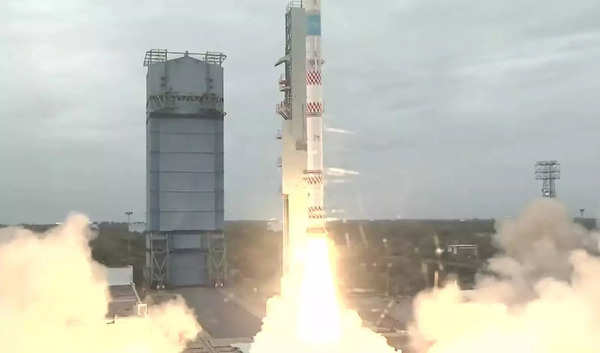
The key features of SSLV include low cost, low turnaround time, flexibility in accommodating multiple satellites, launch-on-demand feasibility, minimal launch infrastructure requirements.
The rocket can be made within one week because of many innovative features introduced. These include modular systems, simplified pyro circuit and modular feature for separation system, multi-satellite adapter deck, miniature low-cost avionics with commercial off-the-shelf components, on-board computer with rapidly reconfigurable check-out system with minimum ground interface.
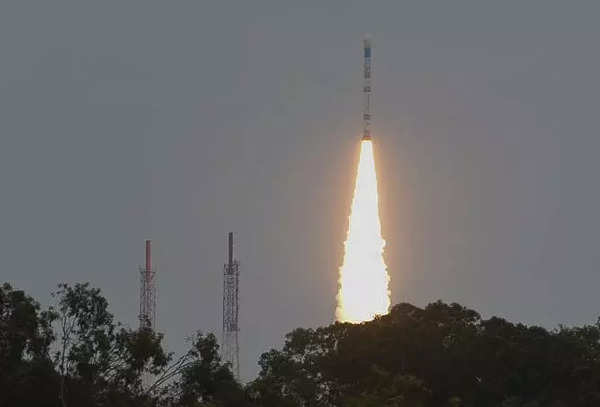
Some of the new systems introduced in the launch vehicle include SS1 motor, which is the third largest solid booster of Isro, SS3 motor, which is a new composite upper stage solid motor, and liquid propulsion-based terminal stage for precise injection of satellites.
Two satellites
The 145kg EOS-2 is an experimental imaging satellite with a short turn-around time and a high spatial resolution.
Azaadisat is an 8U Cubesat weighing around 8kg. It carries 75 different payloads each weighing around 50gram and conducting femto-experiments. The payloads were built by girl students from rural regions across the country. The payloads include a UHF-VHF transponder working in ham radio frequency to enable voice and data transmission for amateur radio operators, a solid state PIN diode-based radiation counter to measure the ionising radiation in its orbit, a long-range transponder and a selfie camera.
After establishing itself with successful launches of various satellites using its Polar Satellite Launch Vehicle (PSLV) and Geosynchronous Satellite Launch Vehicles (GSLV), Isro had targeted the SSLV market which places the satellites into 500 kms low earth orbit.
(with inputs from agencies)
FOLLOW US ON SOCIAL MEDIA
FacebookTwitterInstagramKOO APPYOUTUBE
Start a Conversation
end of article

